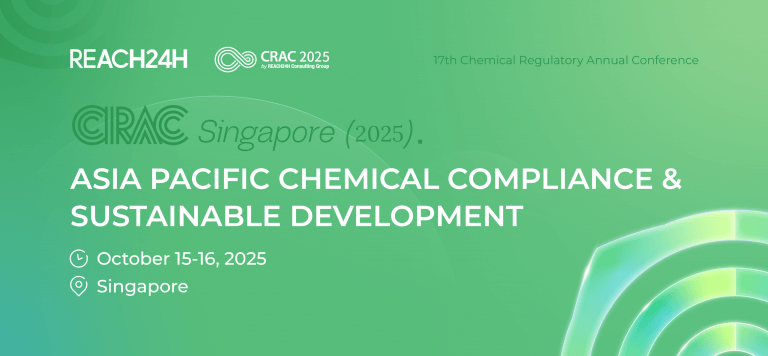What Are Medical Devices: Advanced Technologies Within the Human Body
Under the EU Medical Device Regulation (MDR, Regulation (EU) 2017/745), a medical device is defined as any instrument, apparatus, appliance, software, or other article intended for diagnosing, preventing, monitoring, treating, or alleviating human disease. Unlike pharmaceuticals, medical devices achieve their primary function through physical means rather than pharmacological or metabolic action. Medical devices are categorized by risk levels:Class I: Low risk (e.g., surgical gloves, bandages)Class IIa/IIb: Moderate to high risk (e.g., syringes, catheters)Class III: High risk (e.g., pacemakers, implantable artificial organs)
Why Is Chemical Safety a Critical Concern for Medical Devices?
Medical devices often contain chemical substances such as plasticizers (e.g., phthalates), sterilizing agents (e.g., ethylene oxide), and heavy metals (e.g., nickel, cadmium). Over time, these chemicals may be released due to prolonged contact or material degradation, potentially posing health risks to users. This makes chemical safety a key focus under the REACH Regulation.
Core REACH Requirements for Medical Devices
The REACH Regulation (Registration, Evaluation, Authorization, and Restriction of Chemicals) establishes a comprehensive framework for managing chemical substances throughout their lifecycle. Medical devices are not fully exempt from REACH, and compliance depends on whether they are categorized as a substance, mixture, or article. Key compliance areas include:
| Registration | Applies to substances and components in mixtures with an annual production/import volume of ≥1 ton. Also applies to substances intentionally released from articles under normal or reasonably foreseeable conditions of use. |
| Authorization | Required for medical devices containing substances listed in the Authorization List (Annex XIV). Companies must submit authorization applications or identify safer alternatives. |
| Restriction | Applies to substances listed in the Restriction List (Annex XVII), which may prohibit or limit specific substances in medical devices. |
Compliance Obligations for Different Types of Medical Devices
Medical Articles
These devices derive their primary functionality from their physical structure, surface, or design rather than their chemical composition (e.g., surgical instruments, catheters, pacemakers). Most medical devices fall under the "articles" category in REACH. Key Obligations:
SVHC Notification: If a Substance of Very High Concern (SVHC) exceeds 0.1% (w/w) in a medical article and the annual export volume exceeds 1 ton, companies must notify the European Chemicals Agency (ECHA). Notifications for newly identified SVHCs must be submitted within six months of their inclusion in the SVHC Candidate List.
SCIP Notification: Medical articles containing SVHCs >0.1% (w/w) must be submitted to the SCIP database under the EU Waste Framework Directive (WFD) before market placement.
Registration of Substances in Articles: Substances intentionally released from medical articles (e.g., fragrances in respiratory masks) with an annual production/import volume of ≥1 ton must be registered.
Authorization of Substances in Articles: If a medical article contains an authorization substance, this specific use requires an application unless exempted under older EU Medical Device Directives.
Restriction of Substances in Articles: Devices in prolonged skin contact (e.g., bone screws, orthodontic brackets) must comply with restrictions, such as the nickel release limit of ≤0.5 μg/cm² per week.
Medical Reagents/Mixtures
These include chemical formulations or solutions used for diagnostic, therapeutic, or other medical purposes (e.g., lubricants, dental filling materials, bone cement). Key Obligations:
Substance Registration: Required for substances with an annual production/import volume of ≥1 ton.
Authorization and Restriction: Applies as outlined under REACH.
Article-Reagent Combinations
These products combine medical articles with reagents or mixtures (e.g., PCR testing devices with diagnostic reagents). Compliance evaluations for such combinations are more complex, as both article and substance obligations must be addressed.
| Device Classification | SVHC Notification | SCIP Notification | Registration | Authorization | Restriction |
| Medical Articles | ☑️ | ☑️ | ☑️ | ☑️ | ☑️ |
| Medical Reagents | ☑️ | ☑️ | ☑️ | ||
| Article-Reagent Combinations | ☑️ | ☑️ | ☑️ | ☑️ | ☑️ |
How to Ensure Compliance with the EU REACH Regulation
The EU REACH Regulation places the responsibility for chemical risk assessment and management on manufacturers, importers, and downstream users. To ensure compliance, companies should:
Implement robust substance management systems
Regularly monitor updates to the SVHC Candidate List, Authorization List, and Restriction List published by ECHA.
Develop alternative materials to replace restricted or hazardous substances.
By proactively addressing these challenges, the medical device industry can ensure safer, more sustainable products for patients while maintaining regulatory compliance.
If you have any questions in this regard, please feel free to contact us at customer@reach24h.com.





